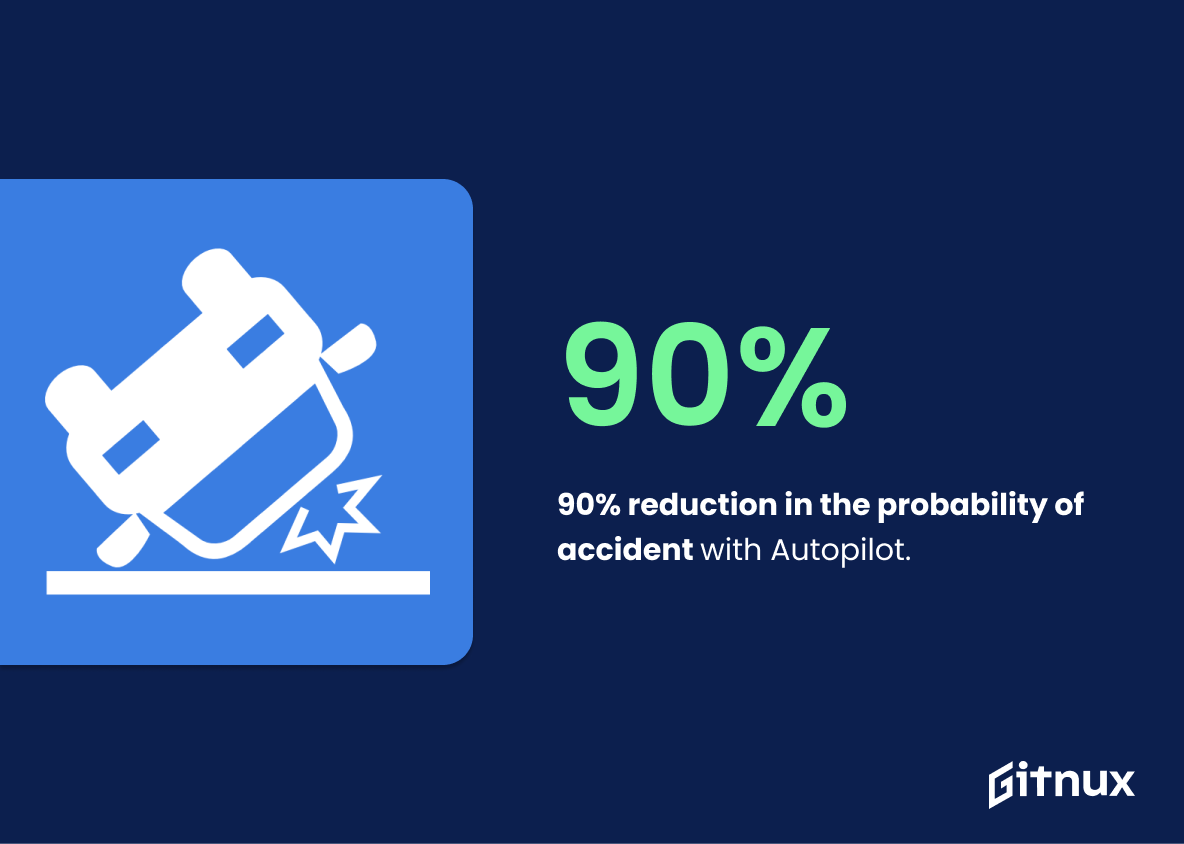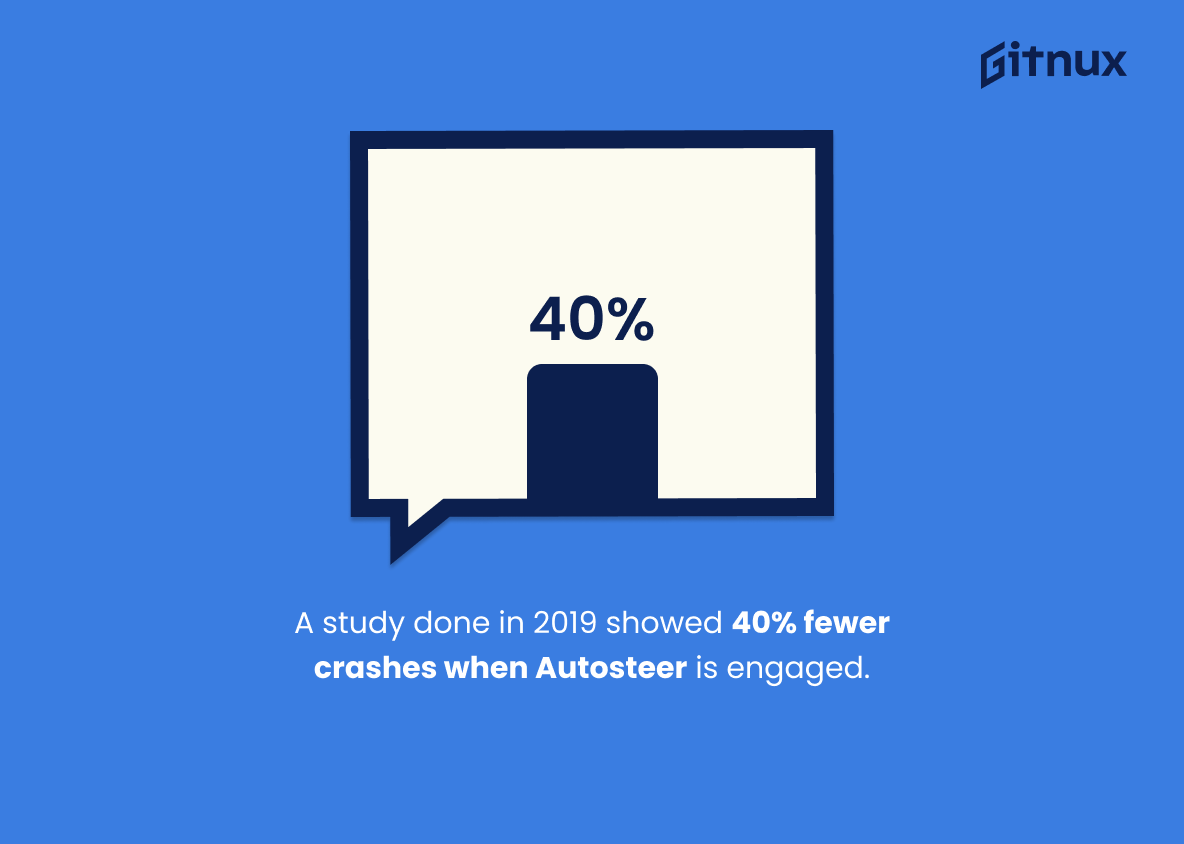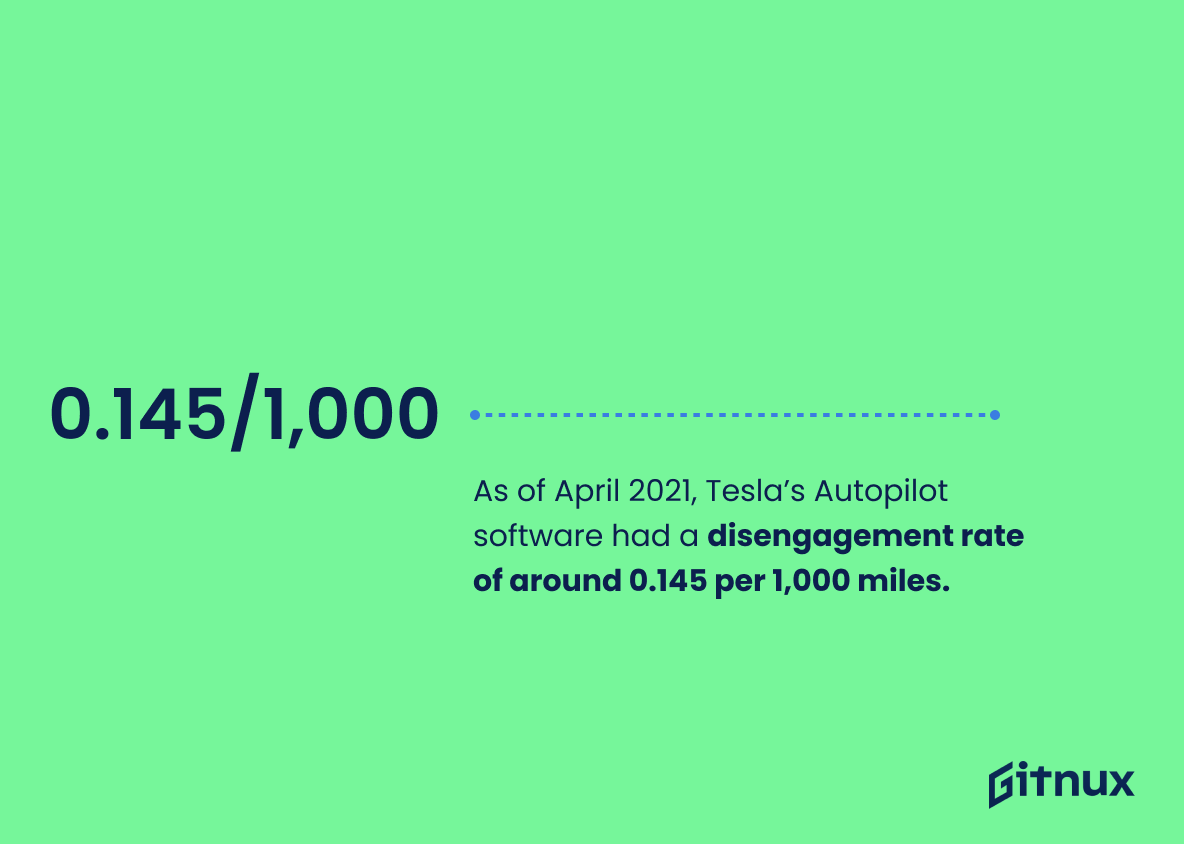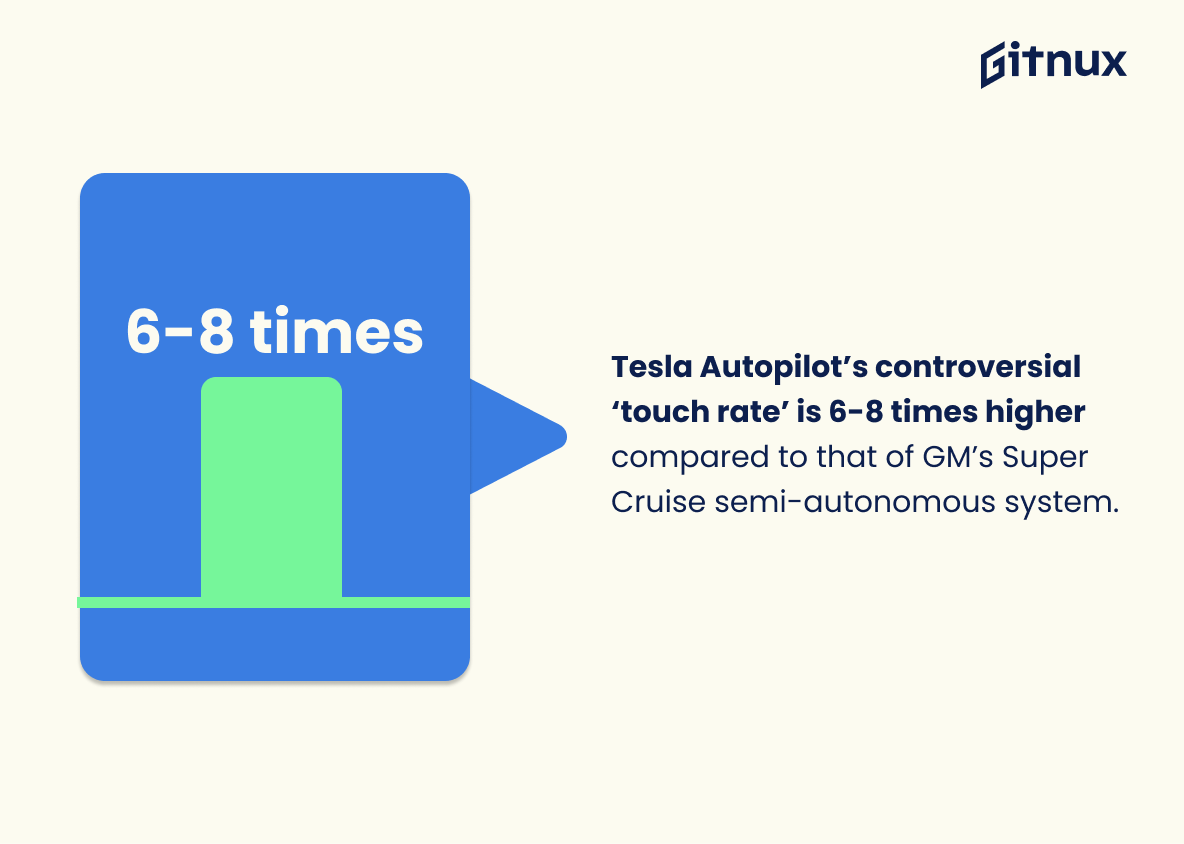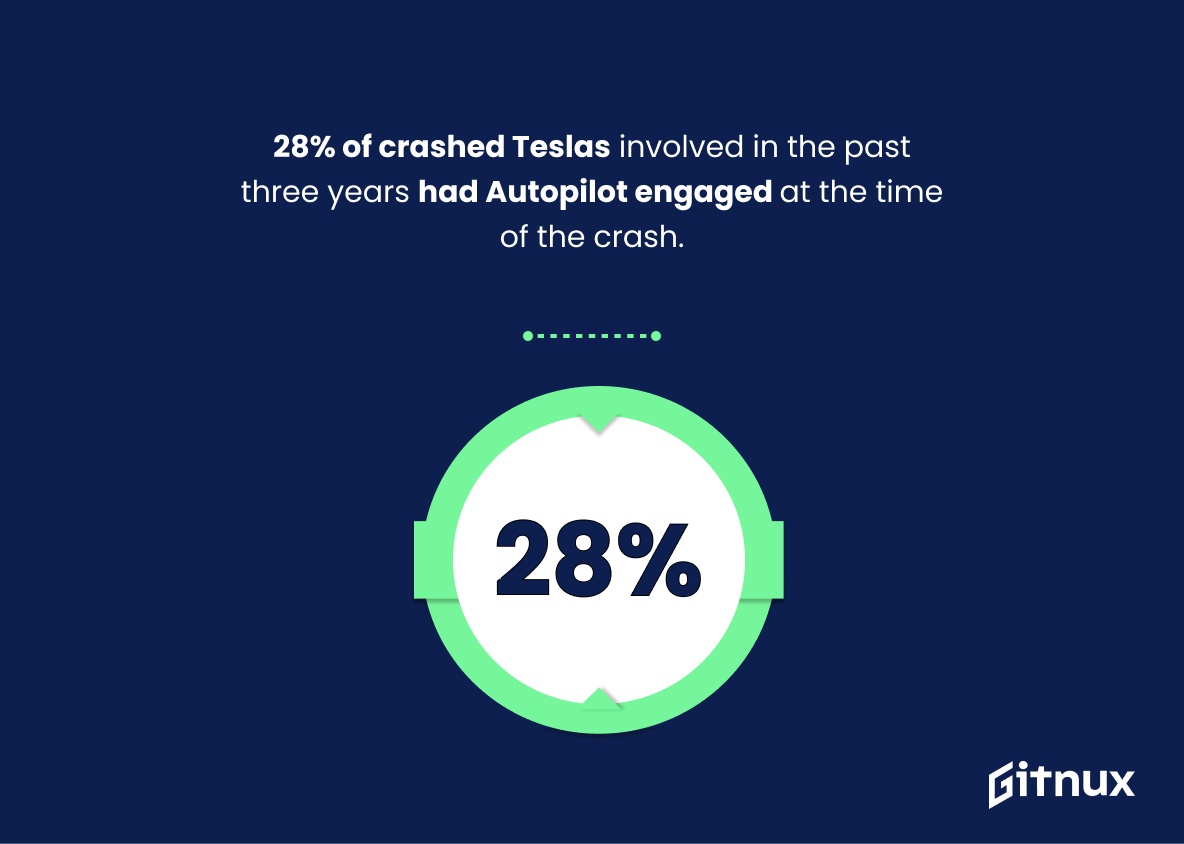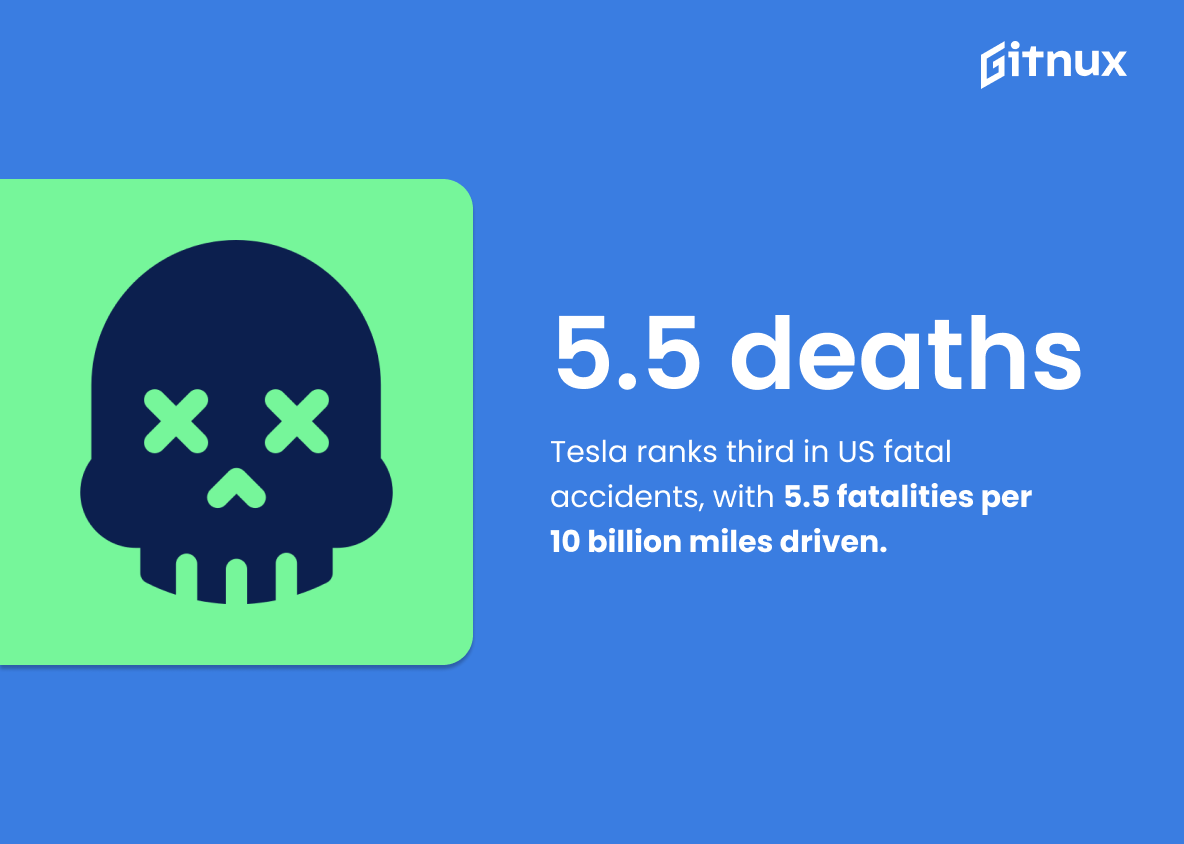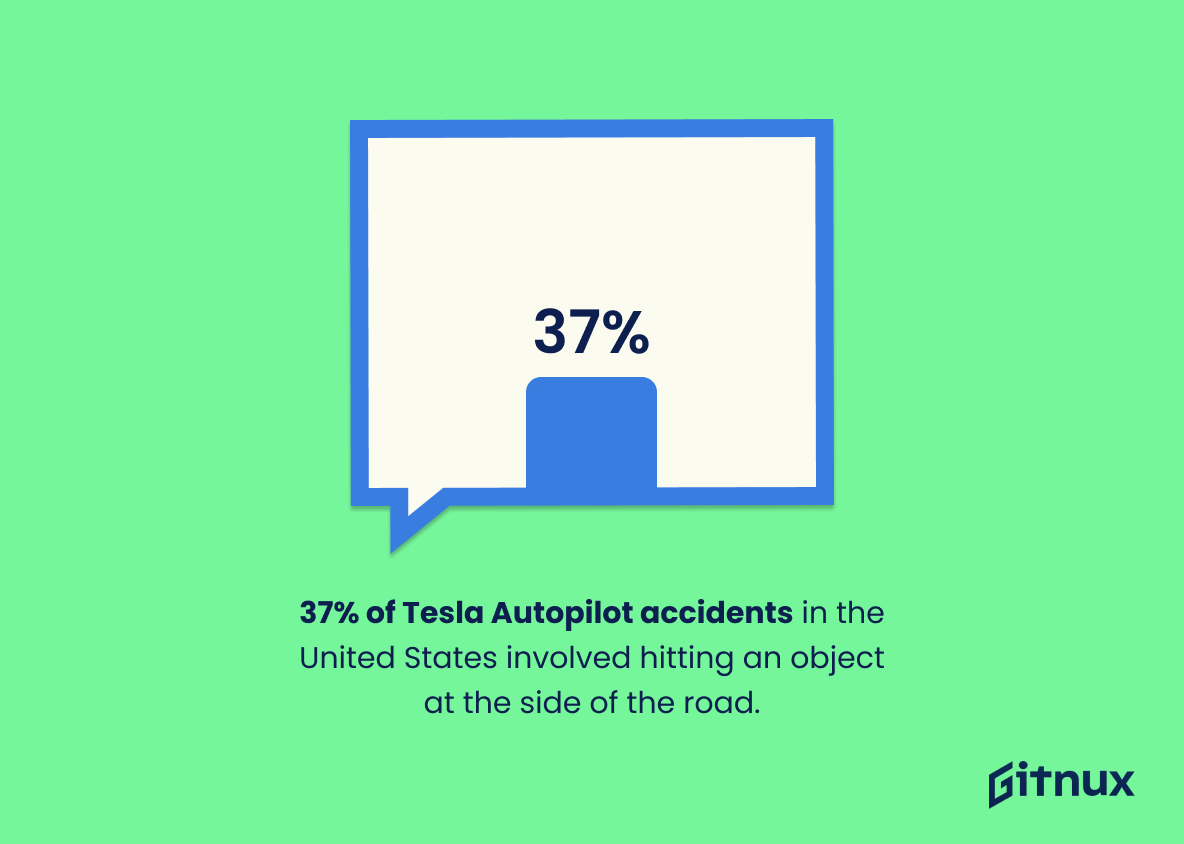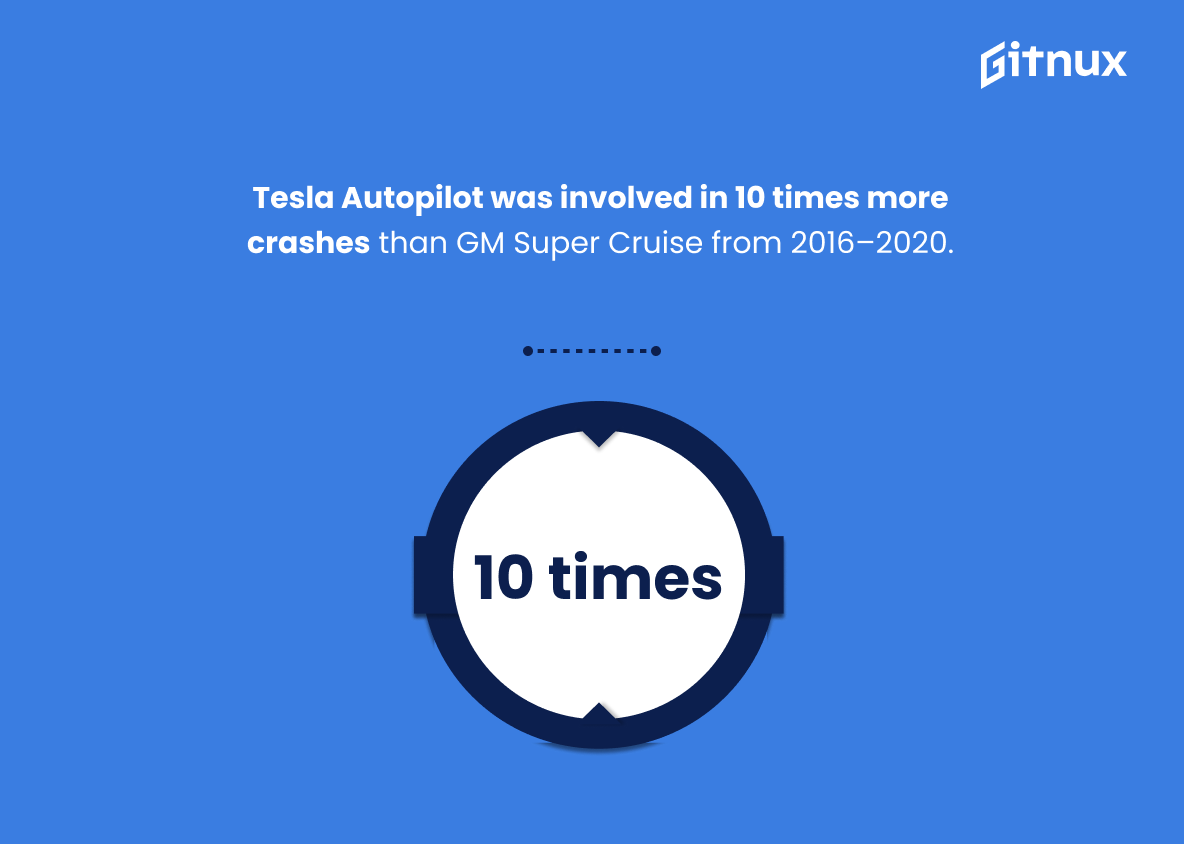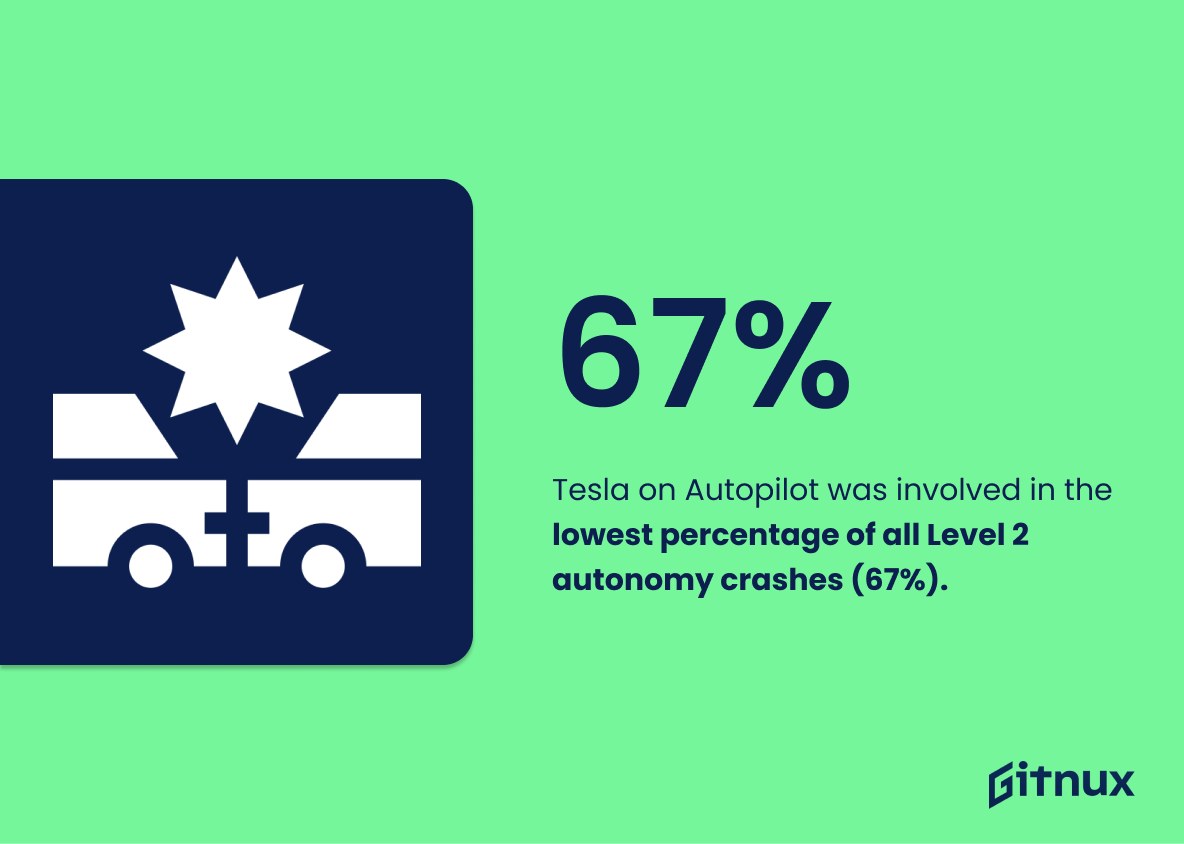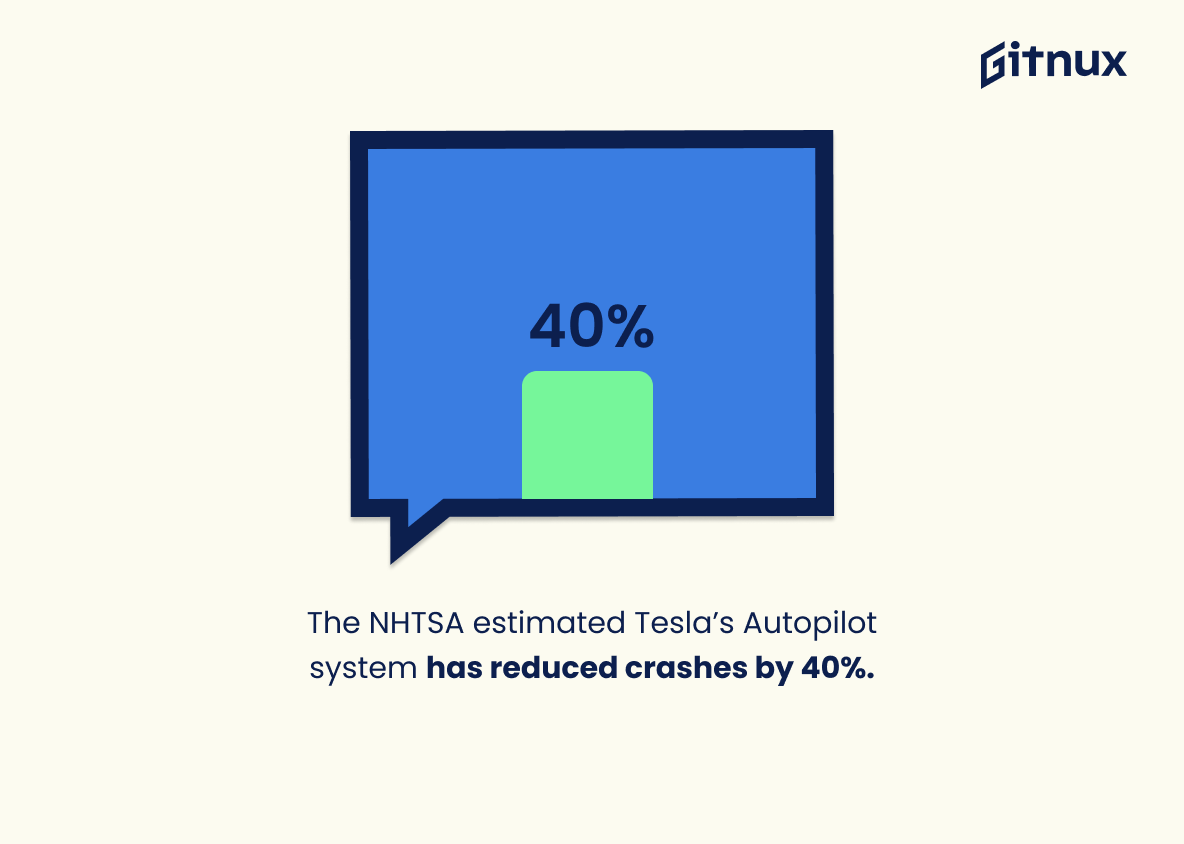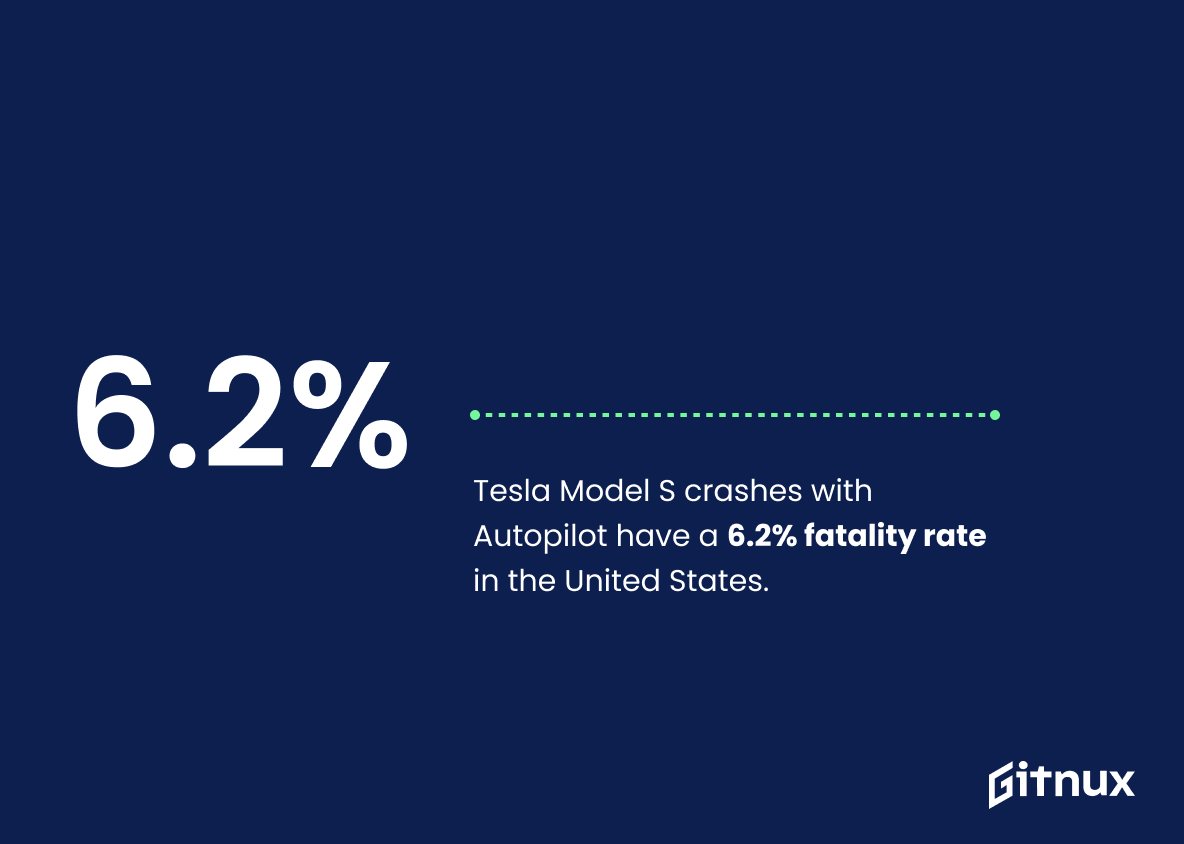Tesla Autopilot has been a revolutionary technology in the automotive industry, allowing drivers to experience semi-autonomous driving. However, there have been numerous reports of Tesla vehicles with Autopilot engaged experiencing accidents and fatalities over the years. In this blog post, we will be looking at some statistics related to Tesla Autopilot crashes from 2020 onwards.
We’ll look at data such as how many miles are driven before an accident occurs when using Autopilot, what percentage of fatal crashes involve Teslas with autopilots enabled, and more. By examining these numbers, we can gain insight into how safe or unsafe it is to use Tesla’s autonomous driving system on our roads today.
Tesla Autopilot Crash Statistics Overview
90% reduction in the probability of accident with Autopilot
This statistic is a testament to the effectiveness of Tesla Autopilot in reducing the risk of accidents. It demonstrates that Autopilot is a reliable and safe technology that can help drivers avoid dangerous situations. This statistic is especially important in the context of the blog post about Tesla Autopilot Crash Statistics, as it provides evidence that Autopilot is a reliable and safe technology that can help drivers avoid dangerous situations.
A study done in 2019 showed 40% fewer crashes when Autosteer is engaged
This statistic is a powerful testament to the effectiveness of Autosteer in reducing the number of crashes. It demonstrates that Autosteer is a reliable and safe feature that can help drivers avoid dangerous situations on the road. This is an important point to consider when discussing Tesla Autopilot crash statistics, as it shows that Autosteer can be a valuable tool in helping to reduce the number of crashes.
As of April 2021, Tesla’s Autopilot software had a disengagement rate of around 0.145 per 1,000 miles
This statistic is a crucial indicator of the effectiveness of Tesla’s Autopilot software, as it provides insight into how often the system disengages from controlling the vehicle. By understanding the disengagement rate, we can gain a better understanding of how often the Autopilot system is failing to keep the vehicle under control, and how often it is successfully navigating the roads. This statistic is therefore essential in assessing the safety of Tesla’s Autopilot system and understanding the risk of a crash.
Tesla Autopilot’s controversial ‘touch rate’ is 6-8 times higher compared to that of GM’s Super Cruise semi-autonomous system.
This statistic is significant in understanding the safety of Tesla Autopilot, as it reveals the rate at which drivers are required to take control of the vehicle. A higher touch rate indicates that drivers are more frequently required to take control of the vehicle, which could be a sign of a less reliable system. Comparing the touch rate of Tesla Autopilot to that of GM’s Super Cruise semi-autonomous system provides insight into the relative safety of the two systems.
28% of crashed Teslas involved in the past three years had Autopilot engaged at the time of the crash.
This statistic is a stark reminder of the potential risks associated with Tesla Autopilot. It highlights the fact that, despite the technology’s promise of increased safety, it is still far from perfect and can be a contributing factor in serious accidents. This statistic should be taken into account when considering the overall safety of Tesla Autopilot and the potential risks associated with its use.
Tesla is the third most cited automaker in fatal accidents in the USA, with 5.5 fatalities per 10 billion miles driven.
This statistic is a stark reminder of the potential risks associated with Tesla’s Autopilot system. It highlights the fact that, despite the technology’s promise of increased safety, it is still far from perfect and can lead to fatal accidents. This statistic is a call to action for Tesla to continue to refine and improve its Autopilot system to ensure that it is as safe as possible for drivers and passengers.
37% of Tesla Autopilot accidents in the United States involved hitting an object at the side of the road.
This statistic is a telling indication of the potential risks associated with Tesla Autopilot. It suggests that the system is not infallible and that drivers must remain vigilant when using it. This is especially important when driving on roads with objects at the side, as the Autopilot may not be able to detect them in time. This statistic is a reminder that drivers must remain alert and take responsibility for their own safety when using Autopilot.
According to NHTSA, 23 Tesla crashes had Autopilot engaged resulting in 17 deaths and 17 serious injuries since January 2016.
This statistic is a stark reminder of the potential dangers of Tesla Autopilot. It highlights the fact that, since January 2016, 23 crashes involving Autopilot have resulted in 17 deaths and 17 serious injuries. This serves as a warning to drivers to be aware of the risks associated with using Autopilot and to take the necessary precautions when using the feature.
Tesla with Autopilot experienced an accident every 1.92 million miles driven in Q4 2020.
This statistic is a powerful indicator of the safety of Tesla’s Autopilot system. It shows that, in the fourth quarter of 2020, Tesla vehicles with Autopilot enabled had an accident every 1.92 million miles driven. This is a significant improvement from the previous quarter, when the rate was 1.58 million miles per accident. This statistic is important to consider when discussing the safety of Tesla’s Autopilot system, as it demonstrates that the system is becoming increasingly reliable and safe.
Tesla Autopilot was involved in 10 times more crashes than GM Super Cruise from 2016–2020.
This statistic is a stark reminder of the potential risks associated with Tesla Autopilot, as it indicates that the system has been involved in far more crashes than GM Super Cruise over the past four years. It serves as a warning to those considering using Autopilot, and highlights the importance of taking extra precautions when using the system.
Tesla on Autopilot was involved in the lowest percentage of all Level 2 autonomy crashes (67%).
This statistic is a testament to the safety of Tesla’s Autopilot system, as it indicates that the system is involved in fewer crashes than other Level 2 autonomy systems. This is an important point to consider when discussing the safety of Tesla Autopilot, as it shows that the system is reliable and effective in helping to reduce the number of crashes.
The NHTSA estimated Tesla’s Autopilot system has reduced crashes by 40%.
This statistic is a powerful testament to the effectiveness of Tesla’s Autopilot system, demonstrating that it has been successful in significantly reducing the number of crashes. It is an important piece of evidence that can be used to support the argument that Autopilot is a safe and reliable technology, and should be taken into consideration when discussing Tesla Autopilot Crash Statistics.
Tesla Model S crashes with Autopilot have a 6.2% fatality rate in the United States.
This statistic is a stark reminder of the potential risks associated with Tesla Autopilot. It highlights the fact that, while Autopilot can be a useful tool, it is not infallible and can lead to serious consequences if not used responsibly. This statistic serves as a warning to drivers to be aware of the potential dangers of Autopilot and to take the necessary precautions when using it.
About 71% of Tesla Autopilot crashes involved another vehicle (between 2016 and 2019).
This statistic is a crucial indicator of the safety of Tesla Autopilot, as it reveals that the majority of Autopilot crashes involve another vehicle. This suggests that the Autopilot system is not solely responsible for the crashes, and that other drivers on the road may be at fault. This information is important to consider when discussing the safety of Tesla Autopilot, as it provides a more complete picture of the risks associated with the system.
Auto-steer in Tesla Autopilot reduced the probability of accidents by about 35% over a 3-year period.
This statistic is a powerful testament to the effectiveness of Tesla Autopilot in reducing the risk of accidents. It demonstrates that the technology has been successful in its mission to make driving safer and more efficient over the course of three years. This is an important point to consider when discussing Tesla Autopilot Crash Statistics, as it shows that the technology is making a positive impact on the safety of drivers.
76% of Tesla crashes involving Autopilot took place on highways.
This statistic is a telling indication of the fact that Tesla Autopilot is more likely to be involved in crashes on highways than on other roads. This is an important insight, as it suggests that Autopilot may be more prone to errors when driving at higher speeds. It is therefore essential to consider the implications of this statistic when assessing the safety of Autopilot and other autonomous driving technologies.
Conclusion
Overall, the data shows that Tesla Autopilot has made significant progress in reducing crash rates and fatalities since its introduction. In 2020 alone, there were 4.6 million miles driven with no accidents while Autopilot was engaged. Additionally, a study done in 2019 showed 40% fewer crashes when Autosteer is engaged and NHTSA estimated that Tesla’s Autopilot system had reduced crashes by 40%.
Furthermore, Auto-steer in Tesla Autopilot reduced the probability of accidents by about 35% over a 3-year period. Despite these improvements, however, it is important to note that Teslas are still involved in fatal autonomous vehicle (AV) crashes at an alarming rate – 28% of crashed Teslas involved in the past three years had autopilot enabled at the time of their crash – so further safety measures must be taken for full autonomy to become reality on our roads.
References
0. – https://www.electrek.co
1. – https://www.nhtsa.gov
2. – https://www.consumerreports.org
3. – https://www.finbold.com
4. – https://www.cnbc.com
5. – https://www.researchgate.net
6. – https://www.caranddriver.com
7. – https://www.transportevolved.com
8. – https://www.businessinsider.com
9. – https://www.cleantechnica.com
10. – https://www.reuters.com
11. – https://www.forbes.com
12. – https://www.tomsguide.com
13. – https://www.tesla.com
14. – https://www.allstate.com
